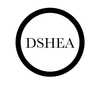[1] Unpublished study. Hokkaido Information University, Ebetsu, Japan.
[2] Unpublished study. Teikyo Heisei University, Tokyo, Japan.
[3] Unpublished study. Teikyo Heisei University, Tokyo, Japan.
[4] Sakurai T, et al. Nat Prod Commun. 2013;19(11):905-10.
[5] Ogasawara J, et al. Nat Prod Commun. 2014; in press.
[6] Ito T. J Agric Food Chem. 2013;61:9155-9.
[7] Akagi R, et al. Pharmacology. 2013;91(1-2):104-11.
[8] Doeppner TR, et al. J Cereb Blood Flow Metab. 2013 Nov;33:1778-88.
[9] Matsuda M, et al. J Invest Dermatol. 2013 Apr;133(4)919-28.
[10] Njemini R, et al. BMC Immunology. 2011;12:24.
[11] Calderwood SK, Murshid A, Prince T. Gerontology. 2009;55(5);550-8.
[12] Ito T, et al. J. Food Sci. 2014; in press
[13] Ito T, et al. Regul Toxicol and Pharmacol. 2014;68:240-9.














)

)